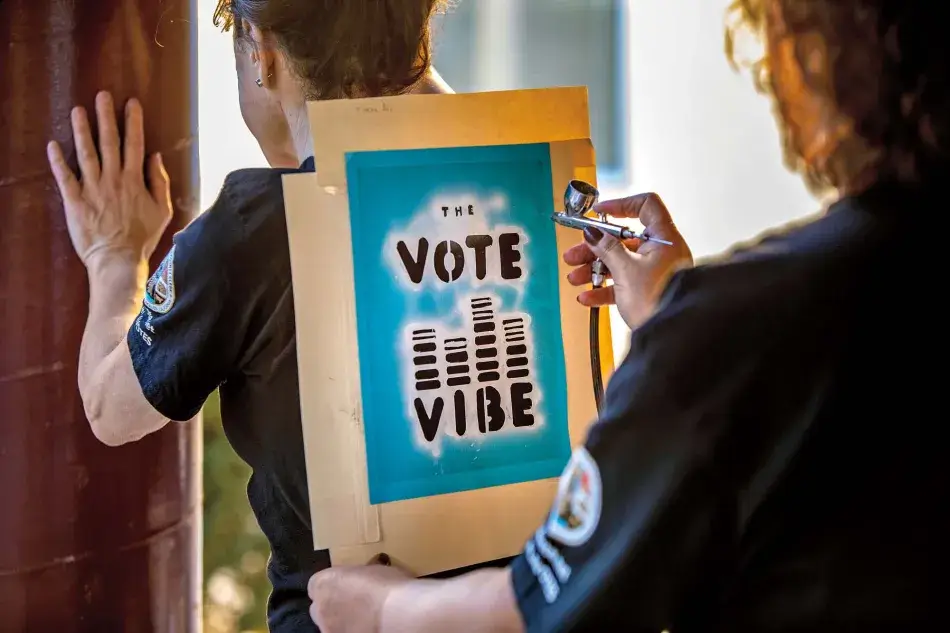The Challenge—and Opportunity
The COVID-19 pandemic and the necessary restrictions on public gatherings that followed from it hit the creative sector hard. Theaters and art museums closed, filming stopped, gallery shows were canceled, and places where artists teach and lead community work, such as schools, community centers, and elder care homes, were shuttered. While some creative work continued remotely or resumed in person with restrictions, creative work that depends on gathering either large or intimate audiences (such as musical performance) is only now beginning to see the moment ahead for reopening. The Brookings Institution estimates that, at the end of July 2020, “2.7 million jobs and more than $150 billion in sales of goods and services for creative industries nationwide” had been lost due to pandemic-related restrictions, with the greatest damage incurred by the fine and performing arts.36 A subsequent analysis by the National Endowment for the Arts estimates that, by September 2020, more than half of actors were unemployed, along with 27 percent of those in music-related jobs.37 Nonprofit arts, entertainment, and recreation organizations lost over 31 percent of their jobs from February 2020 to March 2021—five times the job loss for nonprofits overall.38 Organizations, venues, artists, and other creative workers have experienced the pandemic as a financial crisis and, for many individuals, as a mental health crisis. Without substantial support from the federal government and a wide variety of philanthropic organizations, the damage would have been far worse.
The differential impact of the crisis on artists highlights many of the underlying weaknesses in the sector.39 Black and Hispanic workers in the sector already had lower weekly wages than white and Asian workers, while women had lower weekly wages than men across the board.40 In 2020, when the pandemic was at its height in the United States, Black, Indigenous, and People of Color (BIPOC) artists reported higher rates of unemployment than white artists (69 percent versus 60 percent) and a greater loss of creative income (61 percent versus 56 percent).41 And 78 percent of artists reported that they had no post-pandemic financial recovery plan.42 Artists need help now, but they also need a better system that will both allow them to weather future crises and enable greater innovation and inclusion.
Artists and policy-makers have been looking toward the past to find models for recovery, with numerous op-eds and articles referencing the Works Progress Administration (WPA) and Comprehensive Employment and Training Act (CETA).43 In the wake of the Great Depression, amid high unemployment, the federal government instituted the WPA, a workforce and job creation program that employed hundreds of artists through commissions for public art, live theater, work as educators, and writing about the nation, among other activities. Various commissioning and employment programs were directed specifically at artists, often separated by art form. Similarly, the CETA program was initiated in 1973 to counter high unemployment. Artists were not specifically targeted, but tens of thousands of them benefited from its general provisions. Artists were employed in public service and in arts organizations. Both programs were successful, yet they were also controversial in some circles and short-lived. Because the WPA, in particular, was not intended as more than an emergency measure, it was not focused on building new systems of employment for artists. While it began some careers, and filled a gap for some others, it was not concerned with the long-term maintenance of artistic careers. And both programs have been criticized for the “top-down” nature of their efforts, which often ignored local structures and needs.
As we look to build a better future for the creative workforce, our challenge is to take inspiration from these historic programs (and from current recovery programs), while building a system that supports artists and their work for many years to come. We offer a set of recommendations that, if adopted, would help build a more supportive, sustainable, and fair system, and we join our voices to those of the many other organizations who are working toward this goal. The following principles and recommendations are one possible pathway to that future.
